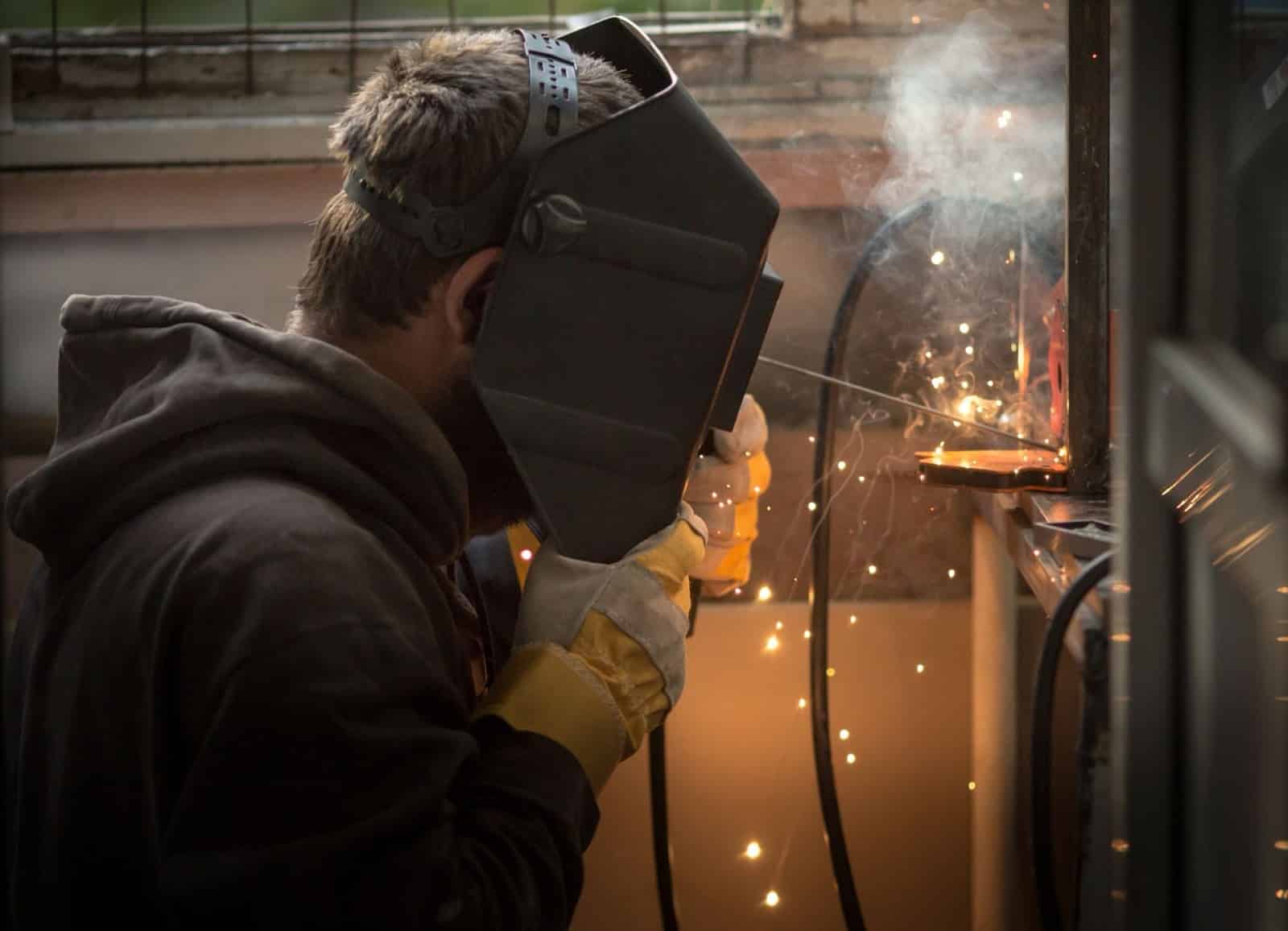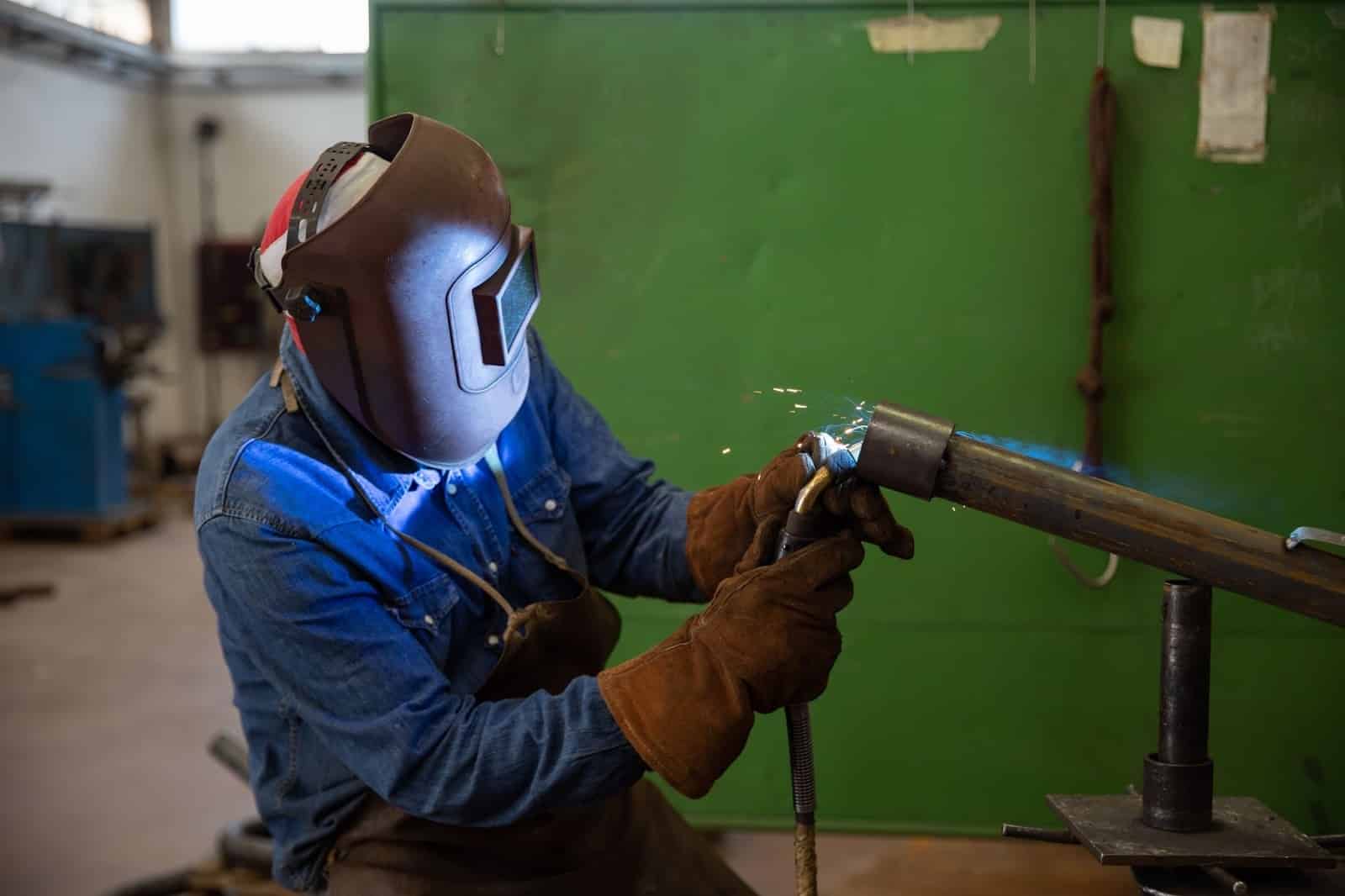When it comes to MIG welding, the choice of shielding gas can make or break your results. Shielding gas not only protects your weld from contaminants in the air but also influences the arc characteristics, penetration, spatter, and overall weld quality.
Among the various gases used, carbon dioxide (CO2) stands out for one major reason, cost-effectiveness. It’s the most affordable shielding gas available and widely used in industrial applications worldwide. But while CO2 has some impressive advantages, it also comes with trade-offs that every welder should understand.
In this complete guide, we’ll explore what CO2 MIG welding is, how it works, its benefits and drawbacks, and when it’s the right choice for your welding equipment supplier.
What Is CO2 MIG Welding?
MIG (Metal Inert Gas) welding, also known as GMAW (Gas Metal Arc Welding), is a process that uses a continuous wire electrode and shielding gas to create a weld. The gas shields the molten weld pool from atmospheric gases like oxygen and nitrogen, which can cause porosity and weak joints.
While the term “MIG” traditionally refers to inert gases (like argon and helium), CO2 is actually an active gas, it reacts with the welding arc. This is why CO2-based MIG welding is technically called MAG welding (Metal Active Gas welding).
In CO2 MIG welding, pure carbon dioxide or a CO2-rich gas mixture (such as 75% Argon and 25% CO2) is used as the shielding gas. The choice between pure CO2 and a blend depends on your project’s priorities, cost, appearance, and weld strength.

How CO2 Works as a Shielding Gas
When CO2 is exposed to the welding arc, it decomposes into carbon monoxide (CO) and oxygen (O2) at high temperatures. These gases react with the molten weld pool to clean and stabilize it.
However, because CO2 is an active gas, it causes a more energetic, hotter arc, which leads to:
- Deeper penetration (ideal for thicker materials).
- More spatter compared to inert gases.
- Slightly rougher weld appearance.
So while CO2 may not produce the cleanest or prettiest welds, it’s one of the most powerful and cost-efficient options for structural and heavy-duty fabrication. Mig welder machine suppliers often recommend this method for industrial applications.
Advantages of CO2 MIG Welding
Despite being reactive, CO2 offers several practical benefits that make it the most popular shielding gas for MIG welding worldwide.
1. Cost-Effective
CO2 is inexpensive and easily available. Using pure CO2 can reduce shielding gas costs by 50–75% compared to pure argon or argon-rich blends.
2. Deeper Penetration
Because of its high energy arc, CO2 provides deeper penetration, which makes it excellent for welding thick sections and structural components.
3. High Deposition Rate
MIG welding with CO2 enables faster metal transfer and deposition, improving productivity in industrial and repair settings.
4. Great for Outdoors
While CO2 isn’t as resistant to wind as flux core wire, it performs better than pure argon in open environments due to its active gas properties.
5. Strong Welds
When properly managed, CO2 welding produces robust joints ideal for heavy-duty applications such as shipbuilding, automotive frames, and pipelines.
Disadvantages of CO2 MIG Welding
While affordable and powerful, CO2 MIG welding isn’t perfect. Here are its main drawbacks:
1. More Spatter
The reactive nature of CO2 leads to an unstable arc and more spatter, requiring post-weld cleanup.
2. Rougher Appearance
CO2 welds often look less smooth than argon-shielded welds, making them less suitable for projects where appearance matters.
3. Increased Fume Generation
CO2 produces more fumes due to oxidation and chemical reactions, which means proper ventilation is a must.
4. Less Suitable for Thin Metals
Because of its high heat input, CO2 welding can easily burn through thin sheet metal. Argon-rich mixes work better for those applications.
Applications of CO2 MIG Welding
CO2 MIG welding is used across a wide range of industries due to its balance of affordability and performance.
1. Automotive Industry
Used in chassis, frames, and exhaust components where penetration and strength are critical.
2. Shipbuilding and Heavy Fabrication
Perfect for joining thick steel plates and structural components that require durability.
3. Construction
Used in welding beams, girders, and reinforcements.
4. Industrial Equipment Manufacturing
Ideal for agricultural machinery, pipelines, and frames.
5. General Repairs and Maintenance
CO2 cylinders are inexpensive and portable, making this method ideal for workshops and on-site repairs.

Setting Up for CO2 MIG Welding
To achieve good results with CO2, you need to adjust your setup properly.
1. Power Source
A constant voltage (CV) power supply works best. Set polarity to DCEP (Direct Current Electrode Positive) for stable arc characteristics.
2. Wire Choice
CO2 welding is best paired with solid or flux-cored wires designed for active gases:
- ER70S-6 (solid wire) — Good for clean steel.
- E71T-1 (flux core wire) — Suitable for less clean or rusted steel.
3. Gas Flow Rate
Use 20–30 CFH (Cubic Feet per Hour) for pure CO2. The flow rate may vary based on torch design and environmental conditions.
4. Voltage and Amperage
Higher voltages and wire feed speeds are typically required because CO2 generates a hotter arc. Start at moderate settings and fine-tune based on weld penetration and bead profile.
5. Torch Cooling
Pure CO2 produces a hotter arc, so ensure your MIG gun has adequate cooling, especially in extended production runs.
Improving Weld Quality in CO2 MIG Welding
Here are some expert tips to make the most out of your CO2 setup:
- Keep Wire Clean – Any oil, dirt, or rust will increase spatter and porosity.
- Use Proper Stick-Out – Maintain a ⅜–½ inch stick-out for consistent arc control.
- Preheat Thick Sections – For materials above ½ inch, preheating reduces cracking.
- Maintain Consistent Travel Speed – Too slow causes burn-through; too fast causes weak penetration.
- Adjust Torch Angle – Keep it around 15° from vertical to direct shielding gas flow effectively.
Safety Considerations
Although CO2 is non-flammable, safety precautions are crucial:
- Ensure proper ventilation to avoid CO buildup.
- Always wear auto-darkening helmets and gloves to protect from sparks.
- Avoid enclosed spaces, CO2 is heavier than air and can displace oxygen, posing a suffocation hazard.
When to Use CO2 MIG Welding
CO2 MIG welding is ideal when:
- You’re working with mild steel or low-alloy steel.
- Budget constraints make argon blends too expensive.
- You need deep penetration on thick materials.
- Weld aesthetics aren’t the top priority.
Avoid it when:
- You’re welding thin metals or stainless steel.
- You need extremely clean, cosmetic welds.
CO2 MIG welding proves that you don’t always need expensive gases to get the job done. While it produces more spatter and requires a bit more cleanup, its deep penetration, strength, and cost-efficiency make it an unbeatable choice for heavy-duty fabrication, automotive repair, and industrial manufacturing.
Whether you use pure CO2 or an argon-CO2 mix, mastering this technique can help you produce strong, durable welds while keeping operating costs low.
With the right settings, clean materials, and proper safety measures, CO2 MIG welding can deliver professional-quality results without breaking the bank.
FAQ: CO2 MIG Welding Explained
1. What is CO2 MIG welding?
CO2 MIG welding, also known as MAG (Metal Active Gas) welding, uses carbon dioxide as a shielding gas to protect the weld from contaminants. Unlike inert gases such as argon, CO2 is an active gas that interacts with the welding arc, offering deeper penetration and cost-effective results for industrial applications.
2. What are the main advantages of CO2 MIG welding?
CO2 MIG welding offers several benefits:
- Cost-effective: CO2 is cheaper than other shielding gases like argon, reducing overall welding costs.
- Deeper penetration: Ideal for welding thicker materials.
- Strong welds: Produces durable joints, especially in heavy-duty fabrication.
These benefits make it a popular choice among welding equipment suppliers for industrial and heavy-duty applications.
3. Can CO2 MIG welding be used for thin materials?
CO2 welding can be challenging for thin metals because of its high heat input, which can cause burn-through. For thinner materials, welding machine suppliers often recommend using a more inert gas mixture, like argon, or opting for a flux-cored wire.
4. What is the difference between CO2 MIG welding and other types of MIG welding?
While traditional MIG welding uses inert gases like argon and helium, CO2 MIG welding (MAG welding) uses an active gas. This results in a hotter, more energetic arc, which leads to deeper penetration but can also cause more spatter and rougher welds.
5. How do I set up for CO2 MIG welding?
To get the best results, make sure you use a constant voltage (CV) power supply, set polarity to DCEP (Direct Current Electrode Positive), and use the correct wire and gas flow rate. For CO2 welding, welding machine suppliers recommend using solid or flux-cored wires like ER70S-6 or E71T-1.
6. What are the common applications of CO2 MIG welding?
CO2 MIG welding is commonly used in:
- Automotive industry: For chassis, frames, and exhaust components.
- Shipbuilding: For joining thick steel plates.
- Construction: For welding beams, girders, and reinforcements.
- General repairs: Often used in workshops and on-site repairs due to the low cost of CO2.



